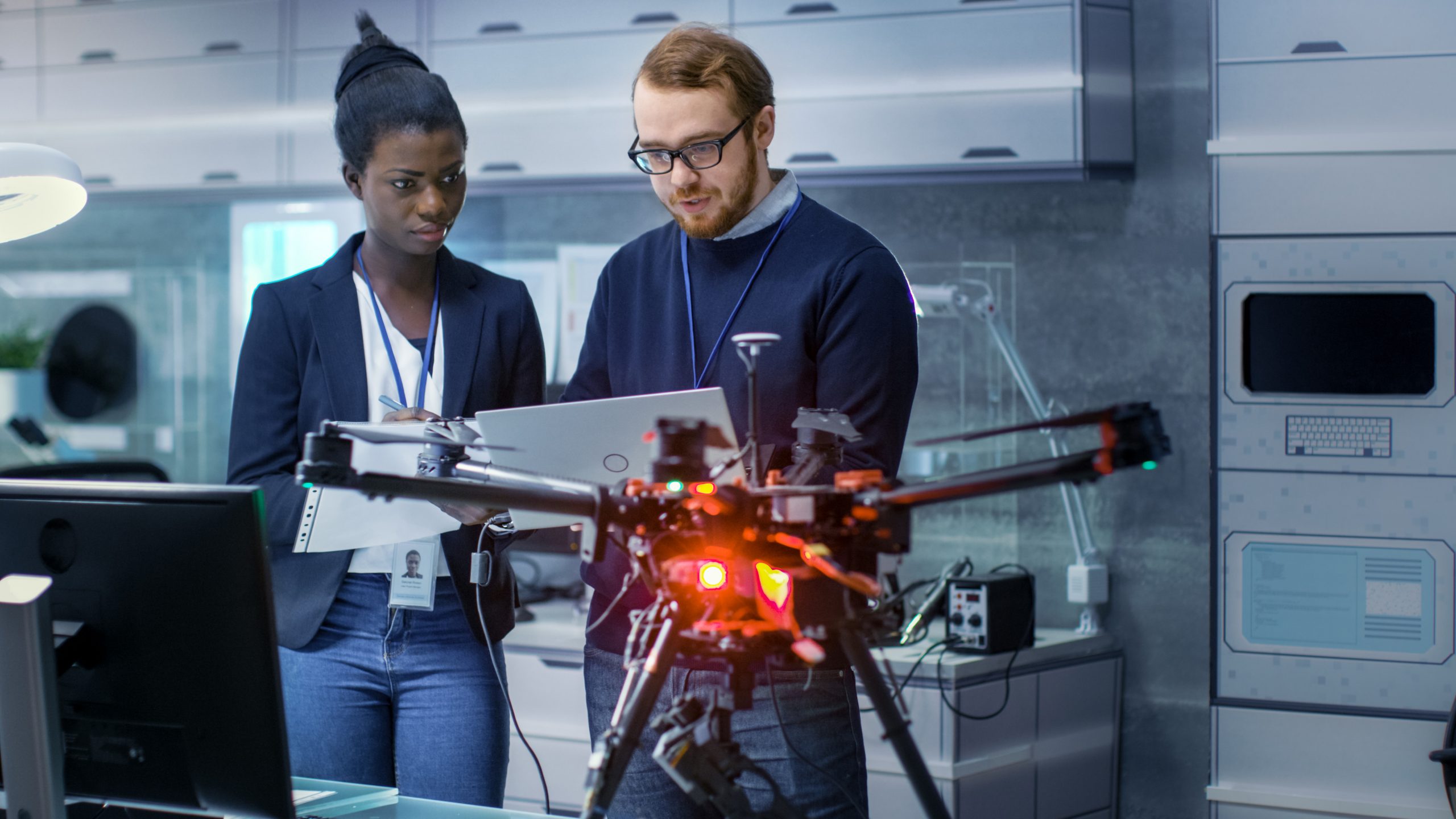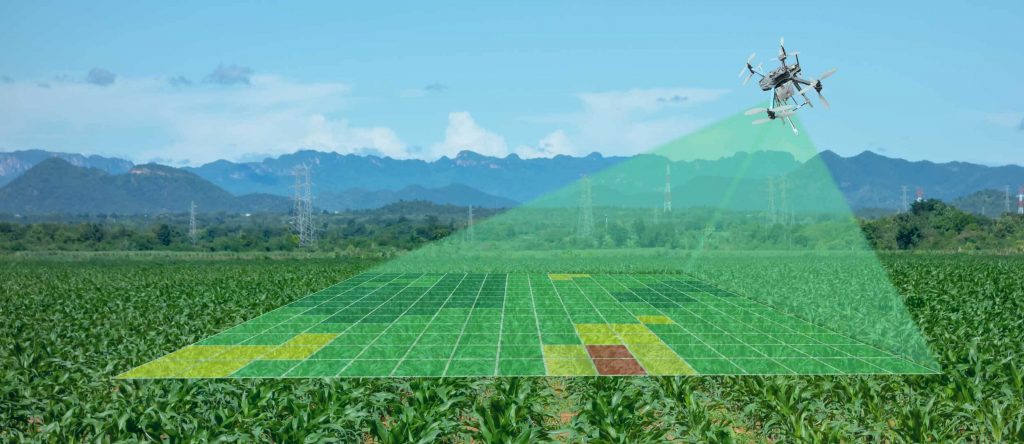Agriculture is a vital part of the economic sector. Agricultural automation is the latest subject worldwide. The population is rising enormously, and food demand is also increasing. Traditional methods used by farmers are inadequate to meet these requirements. New automated methods are currently being introduced. These new methods will meet food requirements, reduce cost of labour and provide jobs for people with relevant skills. Artificial Intelligence has created an agricultural revolution.

It has provided a mean for farmers to be more efficient and productive with less, by reducing the inefficiency that comes with manpower. This article addresses the use of artificial intelligence and drone technology in the agricultural sector. How AI can change the narrative of the agricultural sector.
SCOPE OF ARTIFICIAL INTELLIGENCE IN AGRICULTURE
With Africa continent in mind, the agricultural sector had to adapt the breakthroughs and inventions in the field of automation. Artificial Intelligence in agriculture entails: smart planting, smart field management, smart irrigation and greenhouses. In order to grow, a nation needs to include these growing technologies in agriculture as many sectors depend on agriculture.
The technologies which are AI-based help to increase performance in all fields and handle challenges faced by various industries, including the various fields of agriculture, such as crop yield, irrigation, soil content sensing, crop monitoring, weeding, crop production. Together with global population rising, the agricultural sector is in crisis. But AI can deliver the much-needed solution. AI-based solutions allow farmers to obtain better yield and even improve the quality of produce.

The different ways AI contribute to the agricultural sector are:
Precision farming is one of the most disserted areas in today’s world situation. Drone imaging can support rigorous field analysis, crop monitoring, and field scanning. By combining computer vision technology, drone data, and IoT that farmers are taking rapid action will be ensured. Data fed from drone images could deliver real-time alerts to accelerate precision farming. Commercial drone manufacturers have enforced IoT Platforms and Visual Recognition APIs for analyzing real-time images.
Some fields of computer vision technology are as follows:
- Disease detection: The image sensing and analysis ensures that images of plant leaves taken are divided into surface areas such as background, diseased area, and non-diseased area of the leaves. The contaminated area is then cropped and sent to the laboratory for further evaluation. This also helps to identify pest and in sensing nutrient deficiencies. A process sequence is shown below.
- Identification of crop readiness: Images of various crops captured under white light show how ripe the green fruits are. The images are run through the algorithm to determine how ripe they are. From this analysis, farmers can create different levels of fruit or crop readiness, add them to assorted stacks before sending them to market. Or based on this analysis, farmers can determine if the crops are ready to be harvested.
- Data-Driven Farm Management: Raw measurements of key crop parameters must be processed efficiently so that numbers or images unambiguously become valuable information. Field-based crop management evolved when Precision Agriculture came to light thirty years ago, but it was certainly transformed by the current digital information era.
- Crop Health and Soil Monitoring: Using AI is an effective way to perform or track potential soil defects and nutrient deficiencies. With the approach to image recognition, AI identifies possible defects through camera-captured images. Deep learning application helps to analyze flora patterns in agriculture. Such AI-enabled applications support understanding soil, plant pests, and diseases.
PRECISION FARMING
Precision Agriculture, which consists of applying what is needed when and where needed, has further enhanced farm management efficiency by adding data-based digital systems that increase producers’ knowledge of their fields. As a farmer, you need to make smart, accurate data-based decisions. No estimates, no hunches. Using precise farming techniques, you can really improve your farm and solve decade-old problems. It doesn’t really matter what kind of farm you run, whether you have livestock or corn crops. Be precise in farming.

With AirSmat mobile command and control (C&C) app, drone covers pre-defined sectors in a mission automatically without any manual control and captured data get downloaded from the drone automatically via AirSmat app which then uploads the captured data to the cloud for processing on our AI-powered platform. With drone capability coupled with AirSmat platform, we save farmers the repetitive and cumbersome tasks of examining each plant individually and using the same techniques to optimize growth; a farmer can sit back and research the means of optimizing agriculture, while the drones do the heavy lifting.
SUMMARY
We know now, that precision agriculture, applied with drones, is an efficient agriculture management methodology. But just like every modern technology, it needs sophistication and advancement in terms of its practical application in order to be feasible for commercial use. This is where AirSmat software platforms are applicable. With AirSmat flagship software product, we revolutionize how drone fleets running our AirSmat Artificial Intelligence (AAI) enabled software to operate, gather data, and collaborate in the era of connectivity to helping farmers to see growth trends, count and size plants, generate prescription maps, identify early indicators of plant stress, and measure the zonal efficiency of farmers plantation.



